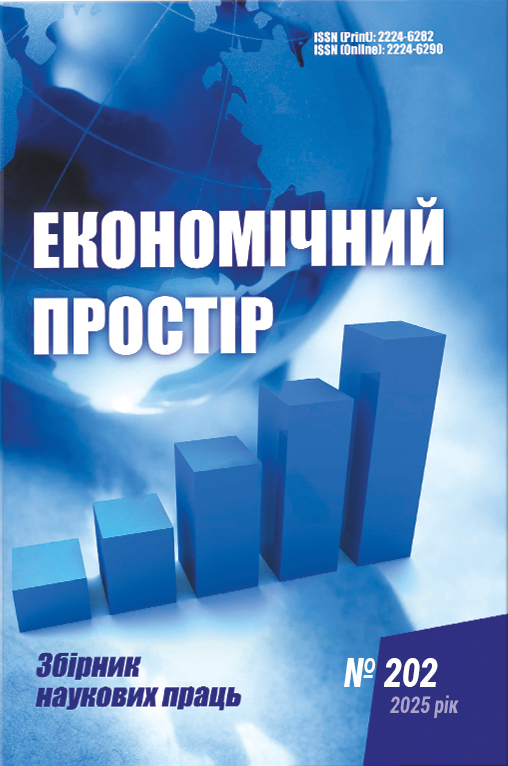ТЕОРЕТИКО-МЕТОДОЛОГІЧНЕ ПІДҐРУНТЯ ФОРМУВАННЯ ФІНАНСОВОГО МЕХАНІЗМУ ДІЯЛЬНОСТІ НАТО
DOI:
https://doi.org/10.30838/EP.202.78-86Ключові слова:
міжнародні відносини, безпека, НАТО, фінансовий механізм, концепція функціоналізму, неофункціоналізм, військовий бюджет, фінансова архітектураАнотація
У статті розглядається теоретичне та методологічне підгрунтя фінансового механізму діяльності Північно-атлантичного Альянсу, яка є міжнародною організацією військового напряму, її основні напрями діяльності і мета створення на функціонування в історичному контексті. Розроблено проєкцію принципів «вічного миру» І. Канта на інституційний дизайн НАТО. Проаналізовано засади функціонування фінансових механізмів у багатонаціональних безпекових структурах, базуючись на концепції функціоналізму. Зосереджено увагу на механізмах міждержавної співпраці з позиції теорії неофункціоналізму (теорії регіональної інтеграції). Розглянуто фінансовий механізм НАТО крізь призму інституціонального підходу в умовах розширення. Досліджено вплив теоретичних підходів міжнародних відносин на формування фінансової архітектури НАТО. Запропоновано концептуальну модель формування фінансової архітектури НАТО.
Посилання
Кант І. (2022). Вічний мир. URL: https://surl.lu/bglesv.
Північноатлантичний договір (Вашингтон, 4 квітня 1949 р.). Верховна Рада України. URL: https://zakon.rada.gov.ua/laws/show/950_008#Text.
Mitrany, D.A (1943). Working Peace System: An Argument for the Functional Development of International Organization. London: Royal Institute of International Affairs. URL: https://unesdoc.unesco.org/ark:/48223/pf0000140386.
Long, D., & Ashworth, L.M. (1999). Working for Peace: the Functional Approach, Functionalism and Beyond. International Political Economy Series. Palgrave Macmillan, London. DOI: https://doi.org/10.1007/978-1-349-27055-2_1.
Neofunctionalism. URL: https://en.wikipedia.org/wiki/Neofunctionalism?utm_source=chatgpt.com#cite_note-:1-1.
Binici, O. (2022). European Integration Theory in Times of Crises: Updating 'the Old Debate' with a Morphogenetic Approach. Europolity: Continuity and Change in European Governance. 16: 5. URL: https://cejiss.org/images/issue_articles/2020-volume-14-issue-4/cejiss-14-4-4-binici.pdf. DOI: https://doi.org/10.51870/CEJISS.140401.
Alec Stone Sweet & Wayne Sandholtz (1997). European integration and supranational governance. Journal of European Public Policy, No. 4(3). Pp. 297–317. DOI: https://doi.org/10.1080/13501769780000011.
Treaty on European Union (Consolidated Version), Treaty of Maastricht. Official Journal of the European Communities, (7 February 1992). URL: https://www.refworld.org/legal/agreements/eu/1992/en/16882.
Binici, Ö. (2020). Expanding European Integration towards the Western Balkans in Times of Crises: A Neo-Functionalist Examination. Central European Journal of International and Security Studies, No. 14(4). Pp. 75–98. DOI: https://doi.org/10.51870/CEJISS.140401.
Keohane, R.O., & Martin, L.L. (1995). The Promise of Institutionalist Theory. International Security, No. 20(1). Pp. 39–51. URL: https://www.jstor.org/stable/2539214?origin=crossref.
Keohane, R.O., & Nye, J.S. (2001). Power and Interdependence. URL: https://salo.li/Bf99478
Keohane, R.O. (2002). Power and governance in a partially globalized world. Routledge. URL: https://salo.li/1De3B8a
Ruggie, John Gerard (1982). International Regimes, Transactions, and Change: Embedded Liberalism in the Postwar Economic Order. International Organization, Vol. 36. Iss. 2. Pp. 379–415. URL: https://salo.li/33949eE
Nye, J. (1990). Bound to lead: The changing nature of American power. URL: https://www.kropfpolisci.com/exceptionalism.nye.pdf.
Nye, J. (2004). Soft Power. URL: https://www.almendron.com/tribuna/wp-content/uploads/2020/02/joseph-s-nye-jr-soft-power.pdf.
Bruce Russet (1994). Grasping the Democratic Peace: Principles for a Post-Cold War World. monograph. DOI: https://doi.org/10.2307/j.ctt7rqf6.
Russett, B., Oneal, J.G. (2000). Triangulating Peace: Democracy, Interdependence, and International Organizations. New York: W.W. Norton, Chapters 2–5. URL: https://salo.li/172CbC7
Kenneth N. Waltz. (1964). The Stability of a Bipolar World. Daedalus, Vol. 93. No. 3. Pp. 881-909 URL: https://www.researchgate.net/publication/282882843_THE_STABILITY_OF_A_BIPOLAR_WORLD.
Ostrom, E. (1990). Governance the Commons. URL: https://www.actu-environnement.com/media/pdf/ostrom_1990.pdf.
Olson, M. (1965). The Logic of Collective Action: Public Goods and the Theory of Groups, With a New Preface and Appendix. Cambridge, MA: Harvard University Press, 186 p. URL: https://www.hup.harvard.edu/books/9780674537514
NATO Financial Regulations and Rules of the Military Budget and NATO Security Investment Programme (NSIP) URL: https://www.nato.int/cps/en/natohq/topics_67655.htm.
North, D. C. (1990). Institutions, Institutional Change and Economic Performance. Cambridge Univ. Press. DOI: https://doi.org/10.1017/CBO9780511808678.
Williamson, O.E. (1985). The Economic Institutions of Capitalism: Firms, Markets, Relational Contracting. University of Illinois at Urbana-Champaign's Academy for Entrepreneurial Leadership Historical Research Reference in Entrepreneurship, URL: https://ssrn.com/abstract=1496720.
Williamson, O. E. (1972). Transaction Cost Economics: The Governance of Contractual Relations. Journal of Law & Economics, No. 22. Pp. 233–261. URL: http://www.jstor.org/stable/725118.
Katzenstein, P.J. (ed.). (1996). The Culture of National Security: Norms and Identity in World Politics. Columbia University Press. URL: https://cup.columbia.edu/book/the-culture-of-national-security/9780231104692/.
Wendt, A. (1992). Anarchy Is What States Make of It: The Social Construction of Power Politics. International Organization, No. 46(2). Pp. 391–425. DOI: https://doi.org/10.1017/S0020818300027764.
Finnemore, M., & Sikkink, K. (1998). International Norm Dynamics and Political Change. International Organization, No. 52(4). Pp. 887–917. URL: https://www.jstor.org/stable/2601361.

